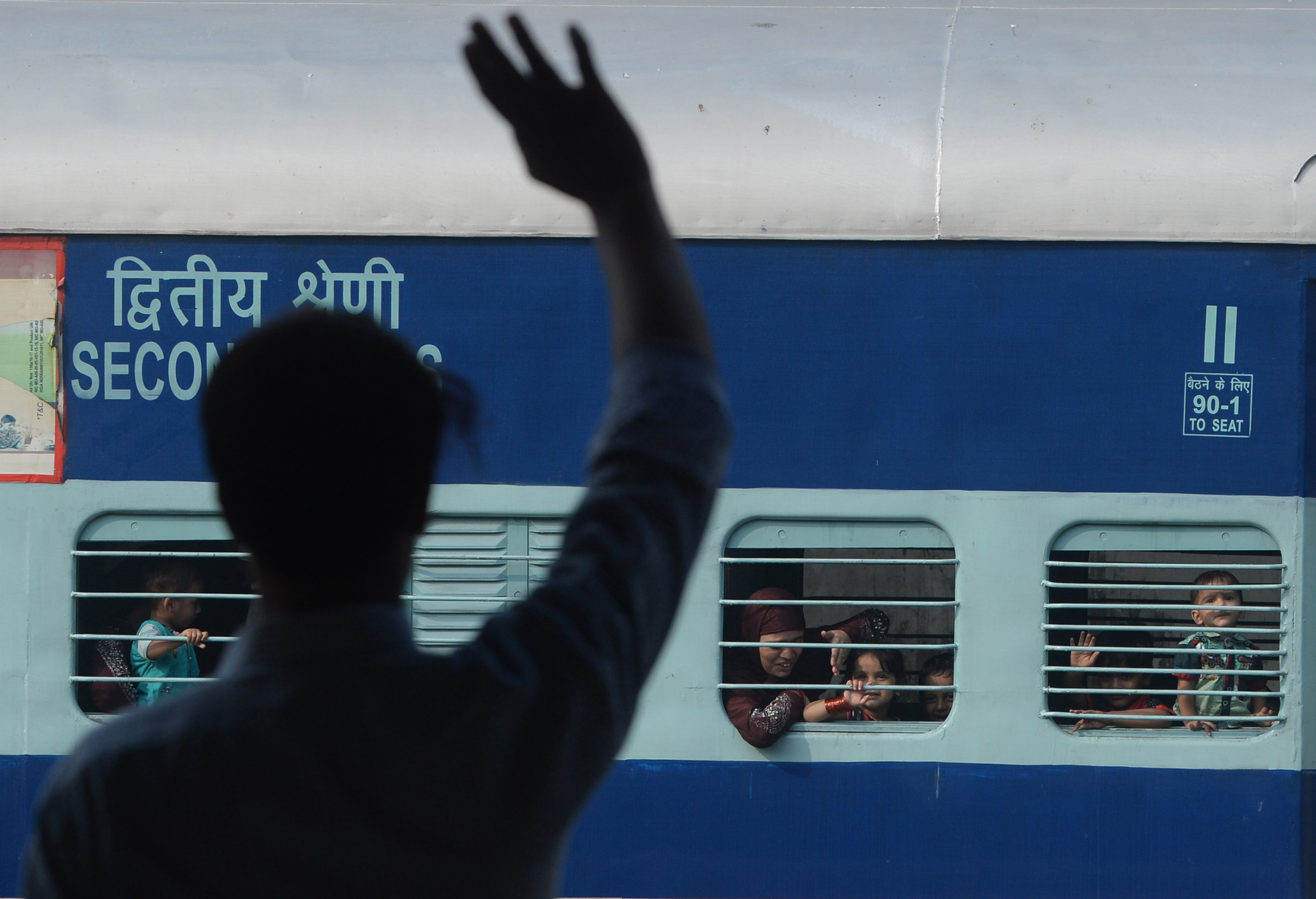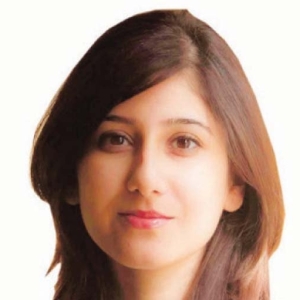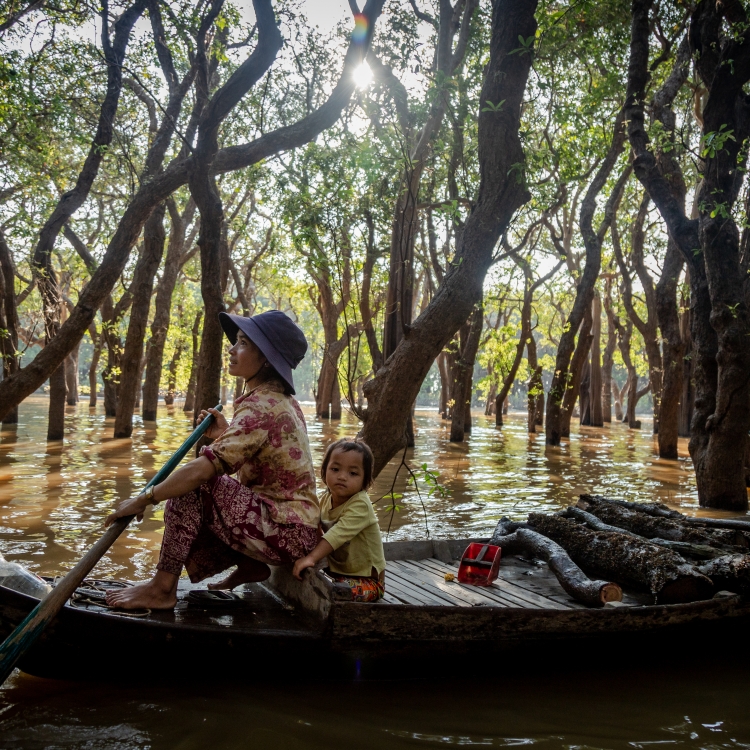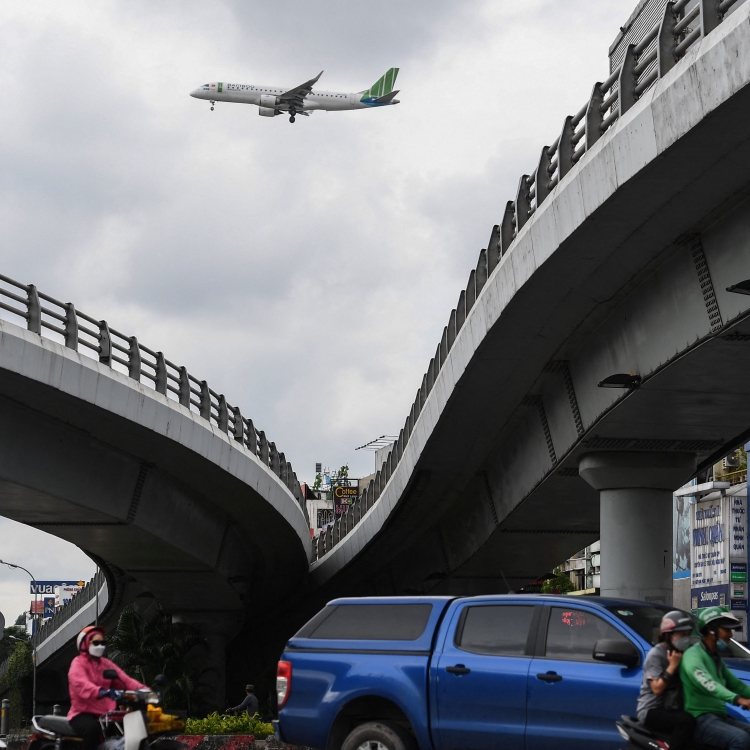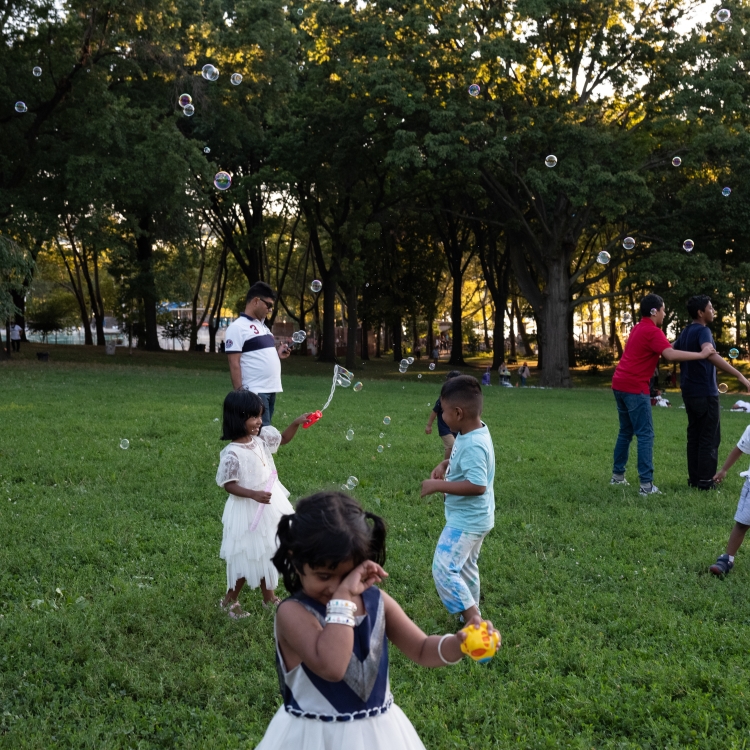magazine text block
The 1947 Partition of British India is memorialized as one of the bloodiest and largest migrations in human history. It is estimated that close to 15 million people were uprooted and that between 200,000 to 2 million people died when the outgoing rulers of the British Raj carved the region up into Hindu-majority India and Muslim-majority Pakistan. Another 75,000 women are said to have been abducted and raped by members of different religious communities — or, at times, their own. British colonialism depended on a divide and rule policy, fanning the flames of Hindu-Muslim tension that reached its apogee during Partition. Over the next seven decades, this otherization would intensify with India, Pakistan, and what later became Bangladesh sharing fraught relationships, defining themselves and their nationalisms in opposition to one another.
While much has been written about Partition, the predominant focus has been on the province of Punjab which was sliced in half, and which witnessed some of the bloodiest massacres of Hindus, Muslims, and Sikhs with communities displaced overnight. Within Punjab too, the emphasis is often on the year 1947. Partition is imagined in a static, packaged way; as a historical “event” that took place 75 years ago rather than an unfolding, evolving process. It is only in the past few decades that oral history projects have emerged, moving beyond statist narratives to explore the nuanced and varied ways in which the macro events of 1947 shaped and continue to shape the lives of countless Indians, Pakistanis, and Bangladeshis. Partition did not manifest in a homogenous way. Depending on one’s geography, social class, gender, and caste — among other variables — experiences of Partition were varied and post-Partition events have left a lasting mark on survivors and their families.
magazine quote block
magazine text block
Since 1947, India and Pakistan have fought three major wars: the 1948 and 1965 wars over Kashmir and the 1971 war during the creation of Bangladesh. Countless other skirmishes and conflicts have emerged between the two nuclear powers. Each of these wars worsened relations, making borders more divisive. Decades ago, borders were relatively porous in many locations and citizens from both countries could travel across with permits. Today, the India-Pakistan border is notorious for being one of the most difficult boundaries to cross. Visa restrictions and bureaucratic hurdles keep divided families apart from one another. In the meantime, both countries have seen a rise of religious nationalism; consequently, India is perceived as being a nation for Hindus and Pakistan as one for Muslims. The repercussions for religious minorities have been grave. Their patriotism is routinely questioned, their religious spaces are desecrated and, increasingly, their bodies are lynched and attacked by mobs under state patronage.
Meanwhile, East Bengal, became East Pakistan and then Bangladesh after the province of Bengal became the second to be bifurcated at Partition. East Bengal birthed the Muslim League, the political party at the forefront of the Pakistan movement, which played a significant part in the creation of Pakistan. However, within a short span of time, tensions escalated between East Pakistan (present day Bangladesh) and West Pakistan (present day Pakistan). Though the British had departed, its colonial legacies continued with West Pakistan now exercising hegemony over the East, suppressing linguistic, political and economic rights. By the late 1960s and early 1970s, a significant movement for autonomy and eventually independence emerged. West Pakistan responded with force; it is estimated that between 300,000 to 3 million people were killed. Bangladesh emerged as an independent nation on December 16, 1971. Fifty-one years later, it continues to accuse Pakistan of a genocide, which the latter denies.
These post-Partition events have left lasting impacts on the relationships between the three countries, shaping and reshaping the region post 1947. The gravest impact, however, has been on ordinary people, who are often left out of history textbooks and official discourse. The oral histories below bring forth narratives that highlight how not only Partition but post-Partition events have influenced people’s lives. Moving beyond 1947, these oral histories also shed light on the impact of hardening borders and the increasing vulnerability felt by minorities in post-Partition years.
Interviews have been lightly edited for length and clarity.
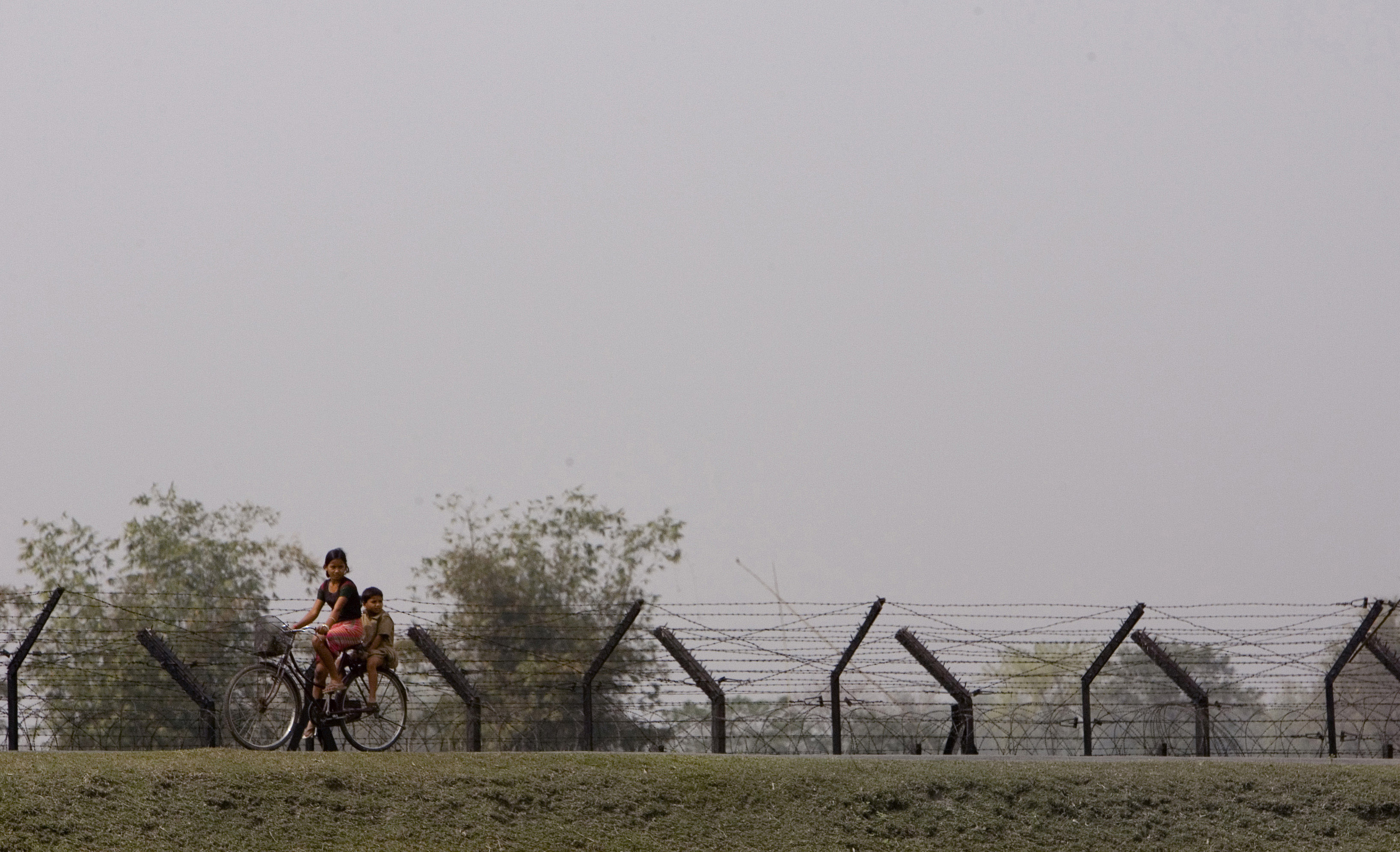
Children bike past a fence separating India from Bangladesh in February 2007. The two countries share a 2,545-mile long border, some three-quarters of which has been fenced off in recent years as the Indian government looks to crack down on migration.
Veronique de Viguerie/Getty Images
magazine text block
The riots that continued: A voice from Bangladesh
My [Hindu] family was in East Bengal at Partition. This is my ancestral home. My father was born in 1920. In 1948 he and my mum got married. Both my father and mother were teachers. They both believed that one does not leave one’s country but, more than patriotism, I think my father was very excited. He was excited about seeing his students’ progress, about them becoming scholars. That’s what made him stay. But as with other Partition survivors, the loss and rupture are things that you have to live through. And in Bengal, the riots and violence between Hindus and Muslims continued for much after Partition. The communal clashes came in spurts.
In the 1950s, my father’s elder sister was about to get married to a Hindu doctor, practicing in Bihar but there was a riot. My aunt was returning from my mother’s school, where she too was a teacher, when she heard that Muslim mobs were coming. She took shelter in a policeman’s house. But then the Muslims as a mob came in through the side entrance. They entered and started debating whether to kill them but suddenly they got an order from their leader and decided to disperse. This incident shook my family so badly that they decided to quickly have a wedding and leave. The wedding took place under curfew. One couldn’t get find a Hindu driver to drive the bride and groom and one couldn’t trust a Muslim driver under the conditions. Eventually, my father’s Christian friend who was a Quaker drove the groom in a truck to the wedding. And on top of that, all the guests had to climb a wall to enter the venue because of the curfew.
After this strange wedding, my aunt and her husband went off to India and took the youngest brother and sister with them. Then came the 1965 Indo-Pak war. Before the war, there was another communal riot, which I saw myself. I must’ve been about seven or eight years old. My father was in England for his PhD so it was only my mother, who was a headmistress at a school, and me. All the village people came to my mother for protection. Forty women and children were brought to us and we had to shelter them in our house. Then one teacher’s husband, who was a policeman, said you cannot protect so many Hindu women and children in your house. At that time the Pakistan government used to have these refugee shelters. Ours was in an ayurvedic medicine factory — which was also once attacked as it was run by a Hindu who had escaped an earlier communal riot and moved to India. We took shelter in that factory for seven days. I remember we couldn’t have a bath for seven days! I also remember that policemen used to come with truckloads of bread. A few of the women would light up a stove and then maybe we would have some food. -Meghna Guhathakurta, Bangladesh

Pakistani children look at a photograph of the 1947 Pakistan-India partition at an exhibition in Lahore, 12 August 2007.
Arif Ali/AFP via Getty Images
magazine text block
The unraveling impact of Partition in 1971: The Hindus of Tharparkar Sindh, Pakistan
In 1947, people knew the country had turned Muslim but at most only some indirect comments were made towards the Hindu community of Thar. But things were very different in 1971 [when India and Pakistan went to war over Bangladesh]. People from within our village, from neighboring villages, began to attack Hindus, loot their homes, and displace them. There was chaos everywhere. People were beaten, their belongings snatched. The [attackers] knew that the situation in the country was bad, people from East Pakistan, many of them Hindu, were fighting for their separation from Pakistan, and so they began to take personal revenge against Hindus in other parts of the country. They began to say “the whole country has become Muslim, you should become Muslim too.”
People were aggressive, they even came with axes. That’s when my village saw violence for the first time, not in 1947 but in 1971. My dadi [paternal grandmother, who was Hindu] shared that while the men hid when they heard of the attacks, the women remained in the house. When the mob entered, they kept asking about the men but when the women refused to answer, they slapped my dadi’s sister a few times and then took everything from our house. They had brought a camel with them, and stole not only our jewelry but even took our grinding stone we used to grind wheat with. This is the earliest memory people of Thar have of being targeted religiously. -Amar Kumar*, Pakistan
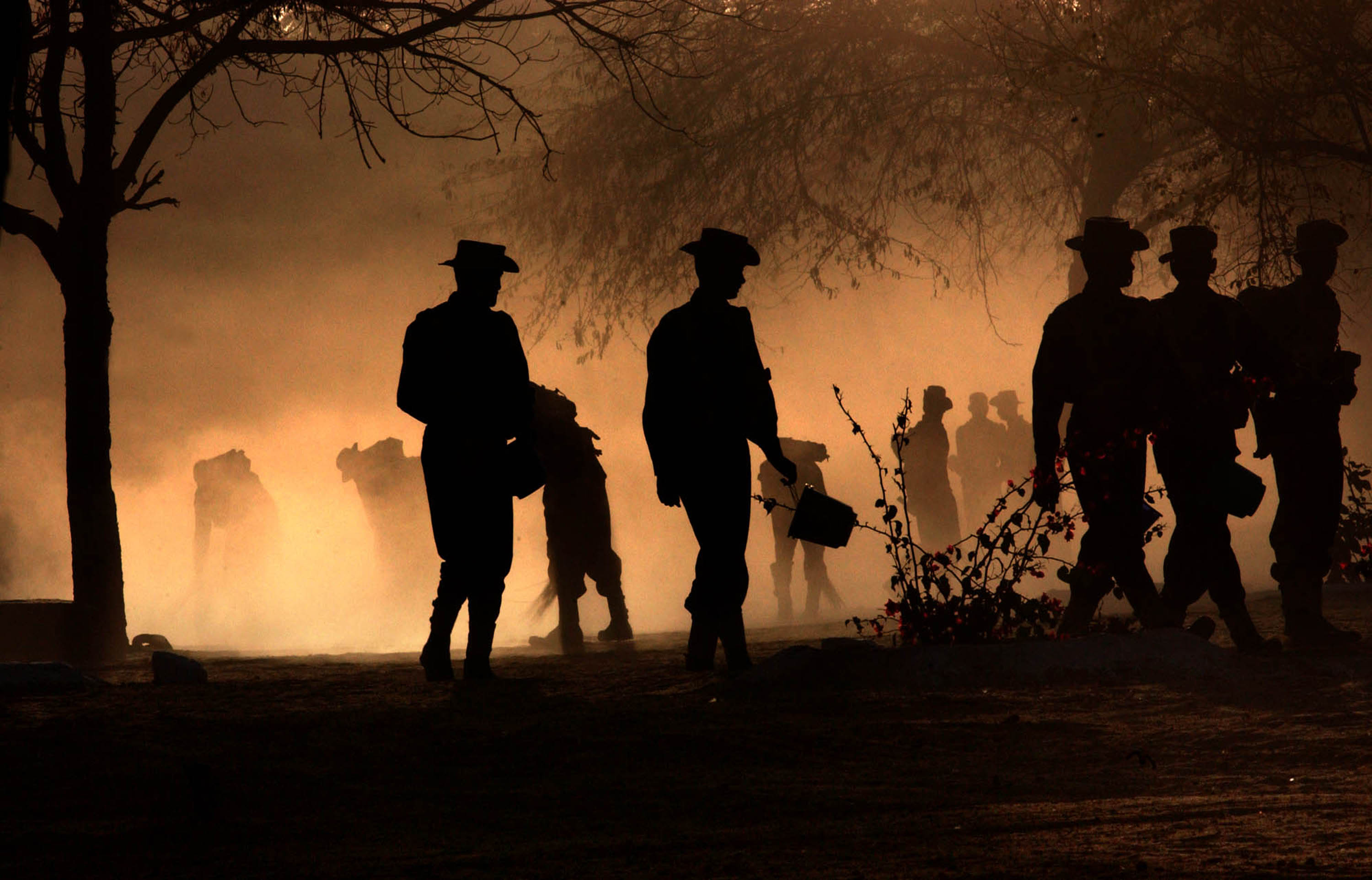
Indian Border Security Force constables perform their morning duties at a training center in Jodphur, India February 10,2004. The constables train camels who are able to survive the harsh conditions in the desert region of Rajasthan and along the border with Pakistan.
Ami Vitale/Getty Images
magazine text block
Hardened borders, divided families and missed funerals
[I was 18 in] 1952 and my family [Muslims long rooted in India] had thought my fervor [for Pakistan] would have dampened by now. It wasn’t that they did not support Pakistan but they had their business, their lives fully settled in India and they never thought about leaving. But I told them that if they did not let me go with their love and blessings, I would simply run away. A train used to run between India and Pakistan to transport migrants. At this time you didn’t need a visa or any other official documents. You just crossed over. The station was near my school and I had spent a lot of time there, volunteering to help those who were making their way to Pakistan over the years. I would make milk bottles for the children, bring food for families, help them pack their belongings, so I knew the schedule. I knew what I had to do to get to Pakistan.
Monabao is the last station in India. From there you have to walk about 12 kilometers to reach Khokhrapar. Once I got there I was exhausted. It had been 12 days since I had left home. But I was so happy and proud of myself for having accomplished my dream, to be in Pakistan. Nothing can explain what I felt. I was in my land. This was my home.
[Initially] there was absolutely no issue like there is now. The Deputy High Commissioner’s office was on Mall Road, right next to Scotch Corner. I submitted my application there and within two or three days I had my visa. [When I first traveled back to India] I was very happy to see my family again. It had been three years and the separation wasn’t easy but there was also no other choice for me. My family was here but my home was in Pakistan.
[But eventually the harsh policies between India and Pakistan started to affect travel, with borders becoming more rigid after the 1965 India-Pakistan war].
I was unable to make it for my parents’ funeral. I didn’t have the visa to go. I was their son and I couldn’t go. Now, you have to fight a constant struggle every day, to visit, to be one with them. I don’t regret my decision but I had never realized how much I would have to give up for Pakistan. I had no idea that things would ever become so bad. -Malik Siddiqui, Pakistan
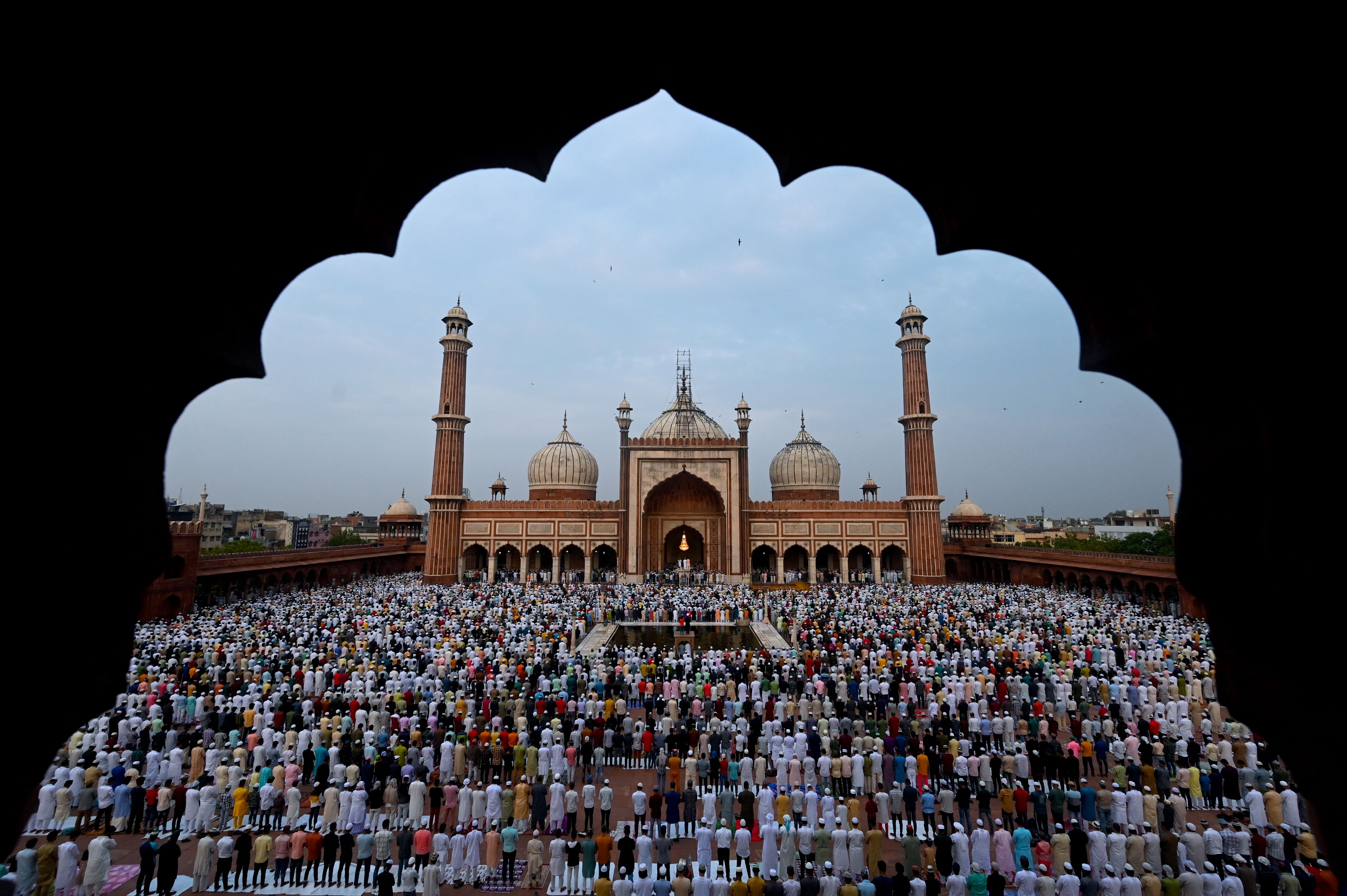
Muslim devotees offer their Eid al-Adha prayers at Jama Masjid in the old quarters of New Delhi on July 10, 2022.
MONEY SHARMA/AFP via Getty Images
magazine text block
Divided sisters: Shireen in India, Amy in Pakistan
Shireen: We really belong to both places. We belong to the undivided subcontinent. I can’t say I grew up here and went there. It wasn’t really like that at all. When I was required here, I was here. When I was required there, I was there and I would keep coming and going.
Amy: Although it wasn’t easy to come and go
Shireen: No it has never been.
[Shireen, as the eldest child, had to move to India in her twenties in the late 1950s to prevent her family’s property in Bombay from being taken over by the government as so-called enemy property in the aftermath of Partition. The rest of her family remained in Pakistan].
Amy: What I keep feeling is, you know, by being over there for so many years, she really had to lose touch with what was going on here. There were very often incidents or people that I know and have close relationships with and she doesn’t know any of that. There are gaps and vice versa.
Shireen: Virtually for the first 25 years, Amy knew practically nothing of my life. I also missed out on her growing up and her own career. I haven’t seen any of the plays she has produced as a theater artist. I wasn’t even able to come home for the Century Celebrations of our Fire Temple [a Zoroastrian tradition, that both Shireen and Amy belong to] in Lahore! I just managed to come when Amy was getting married. Fortunately, I knew who she was marrying or else I would have missed out on all that too. The division has totally destroyed our lives to be frank, Anam. Partition has created turmoil in all our lives.
Amy: It has always been difficult, whether [because of] a permit, visa or passport. It has always been difficult to see Shireen, to go to India or have her come here [to Pakistan].
Shireen: Don’t forget the police reporting dear [Indians and Pakistanis are often issued police reporting visas, making it necessary to document their entry and exit].
Amy: Yes, it takes away half the joy of the visit. If I’m in Delhi for two days, such a lot of time is wasted just reporting my entry and exit into and out of the city. It’s just a hassle.
Shireen: We don’t talk much about this because it’s so traumatic. But it’s important for people your age to know that at the personal level there is no hatred, no enmity. There are so many other people out there like me, myriads of families scattered across the two countries. Their families are in one place, their heart in another. Bombay, Rajkot, Lahore are all home for me. This is my home as much as that is. Why must I choose?’ –Shireen* and Amy*, two Zoroastrian sisters, one Indian and one Pakistani.
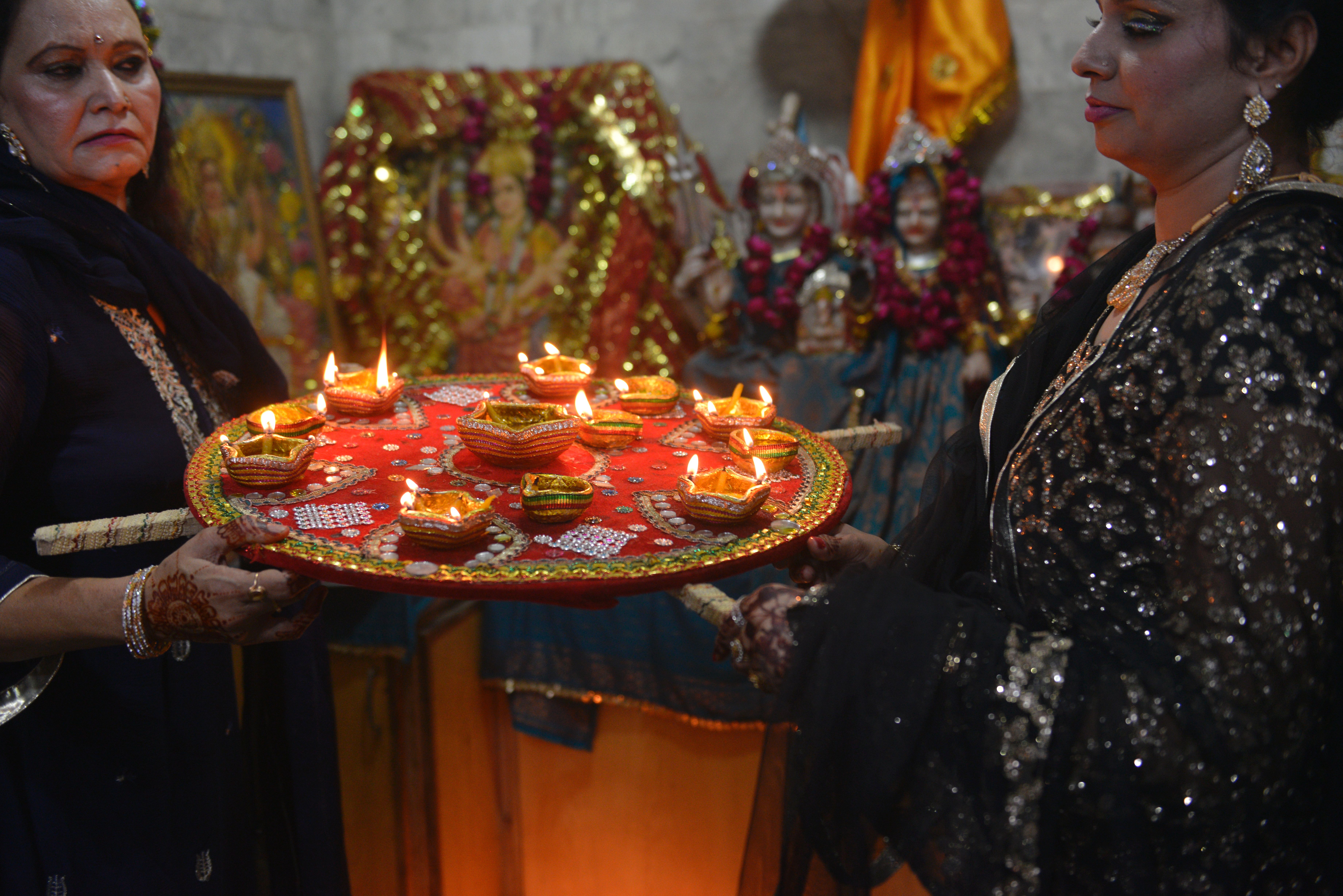
A Pakistani Hindu family offers prayers and light candles as they mark Diwali, the Festival of Lights, in Lahore on October 30, 2016.
ARIF ALI/AFP via Getty Images
magazine text block
Note: these oral histories only offer a glimpse into a few experiences. While this piece brings forth accounts of some religious minorities from Pakistan and Bangladesh, it is pertinent to note that the Muslim minority in India — whose voices we do not hear in this piece — are increasingly facing precarious conditions, including violence, mob attacks and systemic discrimination with impunity.
Some of the oral histories in this article were first published in 1971: A People’s History from Bangladesh, Pakistan and India (Penguin Random House 2019) and The Footprints of Partition: Narratives of Four Generations of Pakistanis and Indians (HarperCollins Publishers 2015).
*Name has been changed for security reasons
